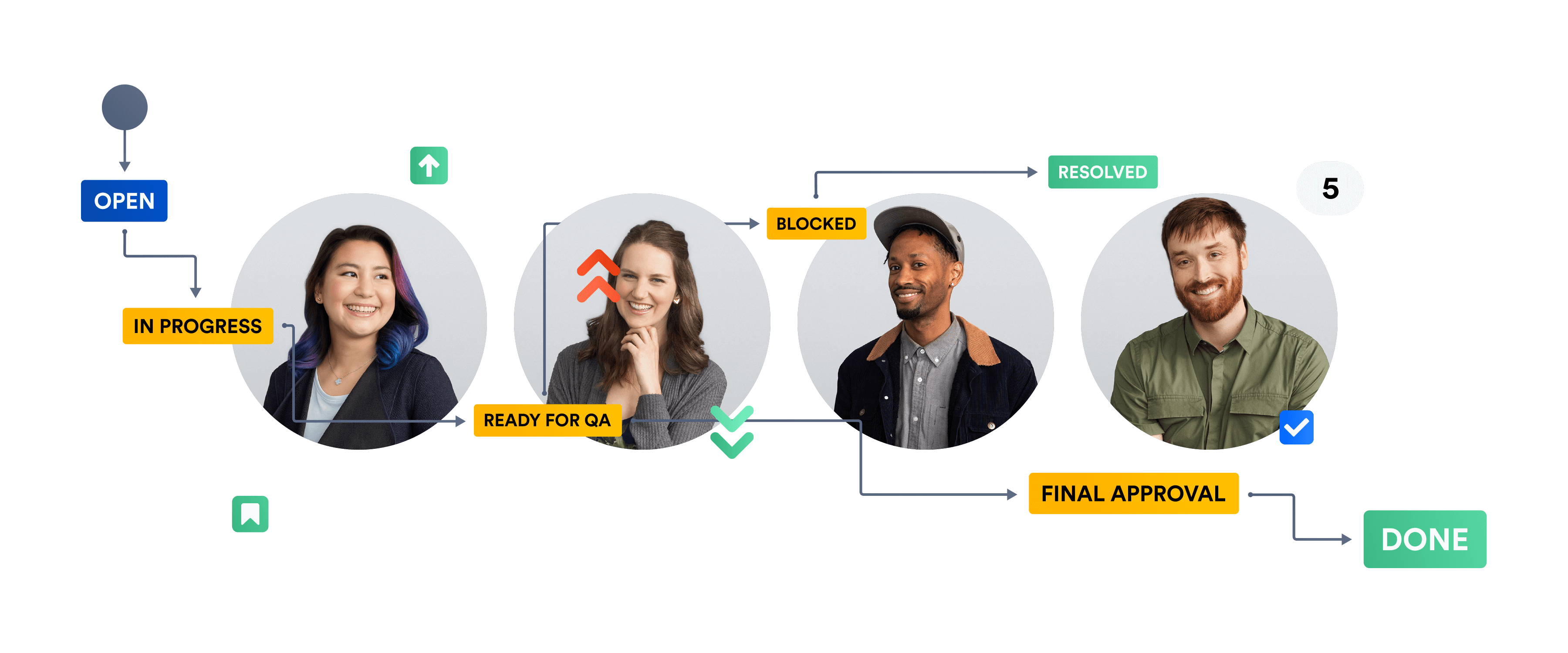Kiva
Collaboration, transparency, and communication are just a few of the values guiding Kiva's team as they strive to connect online lenders to entrepreneurs across the globe. Learn how Jira enables this nonprofit to do just that.
Industry
Non Profit
Location
San Francisco, CA
Company size
0-500
Share
“We collaborate in a way that keeps the mission central while taking into account that everyone identifies with the mission differently. We leverage those differences to build something really great for the Kiva community.”
Emily
Manager, Fellowship and Intern Program, Kiva
TREAT
Since 2005, Kiva's mission has been to connect people through lending to alleviate poverty. Since then, the international nonprofit has funded over $1.12 billion in loans to 86 countries, with an amazing 97% repayment rate back to lenders.
For Kiva, reaching and connecting with such a widespread global audience starts internally, among their team of about 130 employees. At their San Francisco headquarters and other offices worldwide, employees are guided by the acronym TREAT: Transparency, Respect, Accountability, Entrepreneurism, and Teamwork. The fifth value – teamwork – is a critical piece as they strive to connect lenders and borrowers to create loans that change lives.
The meaning of teamwork
When thinking about the meaning of teamwork, "collaboration" is the first word that comes to Emily, Kiva's Manager of the Fellow and Intern Program. For Emily, collaboration means being "able to leverage different people's skill sets and differences of opinion to make a really great product." Recognizing and embracing a diversity of opinions is key: "We collaborate in a way that keeps the mission central while taking into account that everyone identifies with the mission differently. We leverage those differences to build something really great for the Kiva community."
Brandon, a product manager focused on the lender experience on Kiva.org, cited the importance of transparency when it comes to accomplishing complex projects as a team. "It's important to create an environment where everyone is able to contribute ideas, and everyone knows why certain decisions were made," Brandon told us. Jira allows their team complete transparency with all projects, large and small. "We have a backlog of ideas, bugs, suggestions that folks may have. Anyone can look at them and see the priority. People can comment about why something is or is not being prioritized. It simply creates a very clear idea of what we're working on and why."
Communication is a top priority for Verlance, Kiva's Office Vibe Manager: "For us to work together, we all need to know what's going on... Jira helps everyone get on the same page -- or should I say Confluence page. That’s where we get to outline and display information for each other, keeping us in sync. Those disorganized days are ‘gone.’”
Collaboration, transparency, and communication were all in play when Emily recently took on a project to restructure their Salesforce platform. "I could coordinate between the product manager and the engineer and my boss, and we were able to use Jira and Confluence to organize it all. It was my first time using Jira as a project management tool, and the PM could easily show me an epic, story, and an issue. It made it very easy to plug in my thoughts."
Big rocks and business as usual
Jira is the team's single source of truth for all work, regardless of the size or priority of the project. The team tracks its priority initiatives - "the big rocks" as Brandon describes them - and utilizes Jira to break out the work into small chunks. Dividing the project into smaller pieces enables them to go through costing exercises with stakeholders, and be more precise about their timeline to completion. "We can get an accurate look at the scope of work involved, which means we are all the more likely to complete the project on time and meet the requirements we set out," shares Brandon.
They also manage a backlog of smaller initiatives, known as Business As Usual (BAU) projects, with a laser-focus on priority. As a nonprofit, it's particularly important to use resources in the most efficient way. "We are stewards of money that people donate. It's really important that we are making the absolute best use of our resources, and not wasting anything," adds Brandon. Jira enables them to do just that, by tracking daily progress on the smaller, but important, work at hand.
Looking ahead
As the team looks ahead to the rest of 2018, Jira will play a central role in organizing their team and the team's work.
As Emily thinks about the intern program, she recognizes some improvements could be made to the data they’ve collected over the last 12 years. "I want to better leverage the data in the intern program, to make better decisions about programmatic strategy, and to increase diversity and inclusion. I absolutely see Jira playing a role in that."
Brandon’s goal is to solve the problem of lenders’ indecision over which projects to fund. "We have started running some different experiments on this part of the site. We have a ton of different ideas of things we could try to increase conversions, but it's going to be really helpful and useful to prioritize a backlog of those ideas – and that is where Jira will come into play." Simplifying this part of the process will directly result in generating more dollars in the field, funding borrowers who need the capital.
One project at a time, Kiva's teams are working more efficiently and marching toward Kiva’s mission: connecting people through lending to alleviate poverty.



